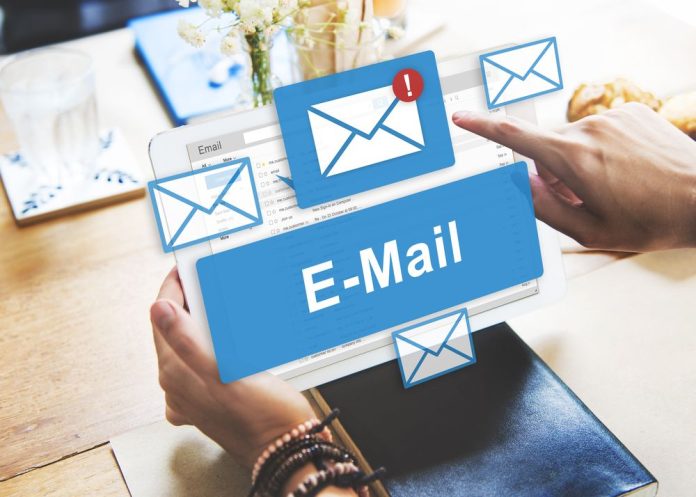By Paul Leslie
Not getting many clicks on your marketing emails? Your subscribers may be missing them. Below, we look at five reasons why people aren’t getting your emails and how to increase your chances of landing in the inbox.
I must have missed that…
We never saw it…
These are not words that email marketers or business owners ever want to hear.
Good email marketing takes a lot of fine-tuning. It’s not just writing and formatting the emails but also the effort of attracting subscribers. Then, making sure your campaigns go to the inbox, where they can be seen.
So why do certain people miss your emails? There can be many culprits. Let’s get into some of the reasons and see how we can avoid the spam folder.
1. Poor data hygiene prevents your emails from arriving in the inbox
The biggest reason why the people who signed up start missing your emails is that you’ve made no or little effort to maintain your email list. Like all assets, your email list requires maintenance. And make no mistake, an email list is a valuable asset with a monetary value. The average value is $113.48 per address.
What kind of undesirable emails inevitably end up on a list?
- Inactive addresses. These emails belonged to someone who once regularly checked the inbox, but something has changed. Perhaps it’s a workplace or school email, and they’ve changed jobs or graduated. Often people plainly change email addresses, and their old email address may be inactive.
- Disposable emails. Some websites automatically generate an email address that works for as little as an hour or even minutes. They self-destruct, hence why some call them “burner” or “temporary” emails.
- Catch-all emails. Administrators set up catch-all emails to collect any email sent to a domain. All emails are funneled into an inbox that someone may or may not check. These mailboxes can get full quickly and can bounce.
- Role-based emails. A team of people typically checks these email inboxes. These include info@, admin@, or office@. Role-based emails don’t have a lot of marketing potential. The individual who signed up to get your emails frequently won’t see them. Also, emails sent to a role-based contact may be deleted in bulk and marked as spam.
How do you use data hygiene to make sure people see your emails?
You have to use an email validation service, no less than quarterly, to identify bad or inactive emails for removal. First, upload your entire list to the email verification platform. The service will check each address for validity.
If you keep these harmful emails on your list, your email deliverability will decline because Internet service providers (ISPs) assume that you send spam. Senders of legitimate emails don’t send emails to inactive or harmful addresses. If you send mass emails, you can count on people missing them if you don’t regularly verify your list.
2. They subscribed on a sign-up form but mistyped their email
Count on many newsletter subscribers to sign up using their phones. And on phones in particular, typos happen all the time.
Also, someone may one of those disposable emails because they’re on the fence about sharing their actual email address. They may do this if they want to take advantage of some promotional item you’re using as an enticement.
You have to make sure people sign up with a valid email address. One mistake in the email address, and they won’t hear from you.
How do you ensure interested people sign up with an accurate email address?
There are two great ways to ensure people don’t enter a false email address. The first thing is to set up an email validation API. It uses the technology of an email validator on all your forms in real time. So, if someone enters an email address incorrectly, it will tell them immediately.
If they try to use a disposable email address or one associated with many spam complaints, it will ask them to enter a different email. If this deters them from subscribing, it’s all the better for your list. You can only succeed with interested readers.
The second way you can be sure you only get real email addresses added to your list is to use double opt-in. It adds a layer of protection that the email they use is working. It works by sending an automated email with a unique link the person must click. Clicking the link certifies the subscriber is genuinely interested in getting your emails. The email has to work, and furthermore, the associated person has to care enough to perform that simple task. By weeding out lukewarm subscribers, double opt-in brings an increase in your engagement rate.
3. You’ve been marked as spam
We gave you a rundown of the poor-quality emails that can infest an email database. Another kind of email will hurt your deliverability rate are abuse emails. These are email addresses associated with people who are likely to mark emails as spam. For them, hitting the spam button is a habit. So, when you have these individuals on your list, there’s a high chance they will hit you with a spam complaint.
That’s not the only reason you may get spam complaints. It could be you’ve made the mistake of buying contacts to add to your list. Using a purchased list is always a bad idea.
You may also get spam complaints because people don’t feel you give them any other choice. Why? You make it hard for them to unsubscribe.
How do you keep people from marking you as spam?
Don’t allow known complainers onto your list. A reputable email checker should identify those troublemakers. Regular bulk validation and connecting an email validation API on all forms will go a long way to keep these abuse emails at bay.
It would be best if you also made the unsubscribe button visible. It’s not fair to someone to make them hunt for the link to get off your list. It also sends the wrong message about your brand. It seems desperate, like inviting people over for a party and then locking everyone inside.
Additionally, don’t add people to your list without their permission. Someone should sign up on their own and acknowledge their consent by clicking on a double opt-in link. No matter how tempted you may be, avoid buying email lists. It’s not a shortcut if it causes you damage. It’s simply a mistake.
4. You disappeared and started sending emails again
Some email marketers only send emails if they have exciting news or something they feel can yield a high ROI. They leave their subscribers alone if there’s no news or no latest product to market. Is that a good idea? They may believe that not bothering their audience is a smart move.
There’s a real issue with this. Suppose you only send an email when you have something to sell or some groundbreaking information to report. In that case, you’ll create deliverability issues, and your emails will end up missing in action. You also risk people forgetting they signed up for your newsletters. They may mark you as a spammer because they don’t recognize you.
How can you set up a schedule to maximize the opening of your emails?
Finding a good sending schedule and sticking with it is paramount. You significantly increase your chances of landing in the inbox when you send at regular intervals. You have to choose what makes sense for your brand.
Not only will sending on a schedule improve your deliverability, but it will also create anticipation from your readers. Give them something to look forward to and make good on that promise.
5. You’ve been blacklisted
One of the worst reasons people may miss your emails is that you are on a blacklist. What is an email blacklist? There are email databases set up by the email service providers like Gmail and Outlook, as well as anti-spam organizations. They add the IP addresses and domains they suspect are sending spam to block them. It’s an effective way of preventing spam that may wind up in someone’s inbox. While a positive thing, it can have negative consequences.
Blacklists affect many email marketers – they can affect even those who send emails ethically. You may be on a blacklist and not even know it. Should you end up on a blacklist, you’re in the same group as spammers. Your emails start going to the junk folder or, even worse, they may not be delivered at all.
How do you know if you are on a blacklist, and what do you do?
Following email best practices can go a long way to stopping you from ending up on a blacklist. Avoiding spammy subject lines and keeping content quality up is crucial, as is being dedicated to routine email validation.
It’s also a great idea to use a blacklist monitoring tool. A blacklist monitor will regularly check your status with hundreds of blacklists. You can’t fix this problem unless you know if it’s happening and where. You should check your domain and IP address to be sure it’s not happening to you. If you determine it is, you can act upon it and get off the blacklist.
The obvious, but overlooked reasons people miss your emails
There’s so much to consider with your email marketing. Sometimes, you may overlook the fact that your emails need consistent promotion. Therefore, we want to say it explicitly: people will miss your emails if they never knew you offered them.
What does that mean for you? First, make the most of your email marketing. When someone makes a purchase, offer them the option of enrolling. Talk about what benefits you’re offering in your newsletter on your social media channels. Plug your email updates everywhere: receipts, signage, voice messages, and several places on your website.
You should also include a link to the sign-up in the emails you send. That way, people corresponding with you can subscribe if they choose. Please don’t make the mistake of assuming they’ll find out about your emails organically. You have to mention it regularly and invite people to join you.
About the Author
 Paul Leslie is a content writer at ZeroBounce, an email validation and deliverability company. He has 18 years of experience creating content across various media platforms, and loves to share his insights into email marketing.
Paul Leslie is a content writer at ZeroBounce, an email validation and deliverability company. He has 18 years of experience creating content across various media platforms, and loves to share his insights into email marketing.


































